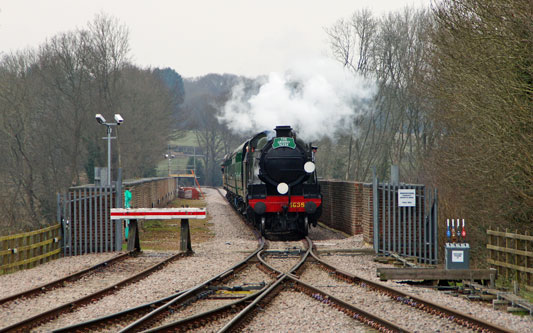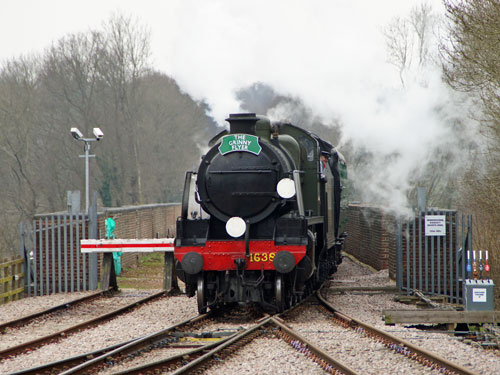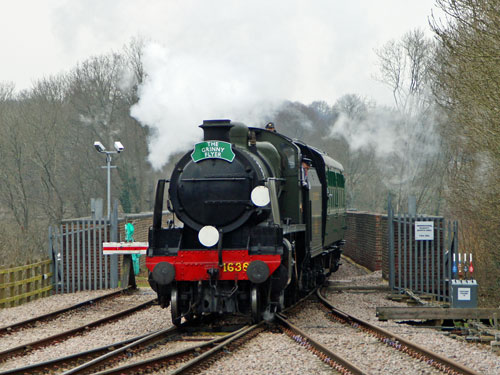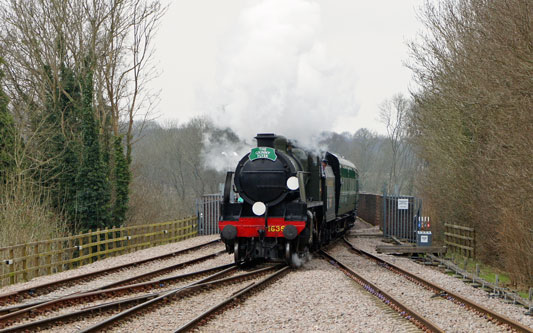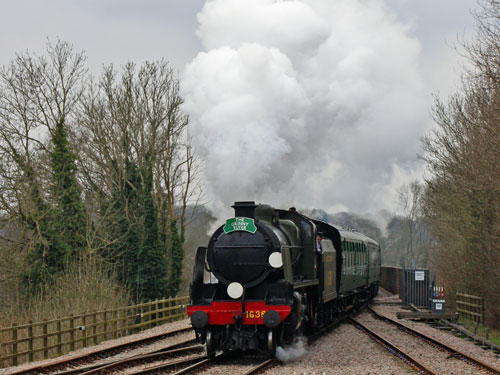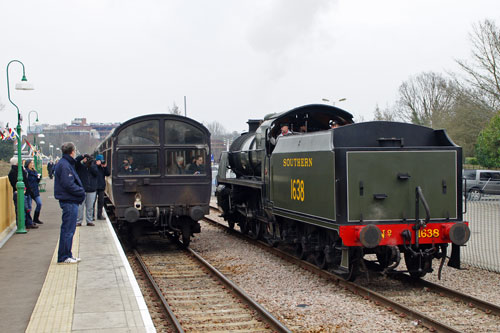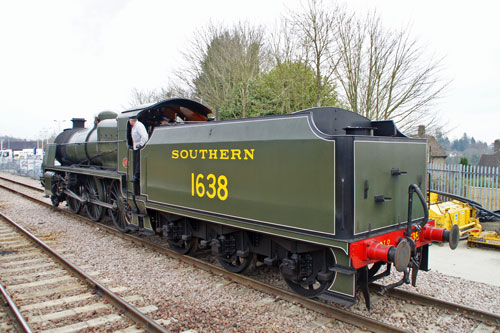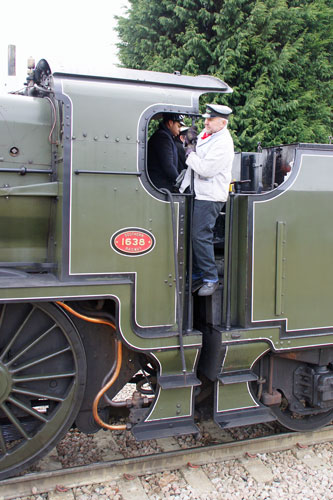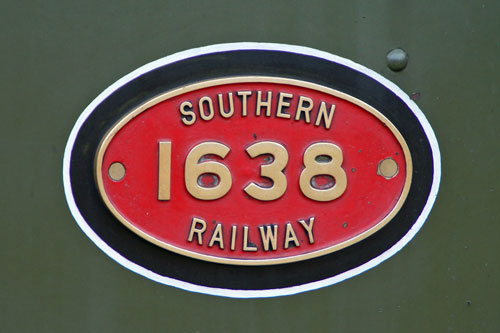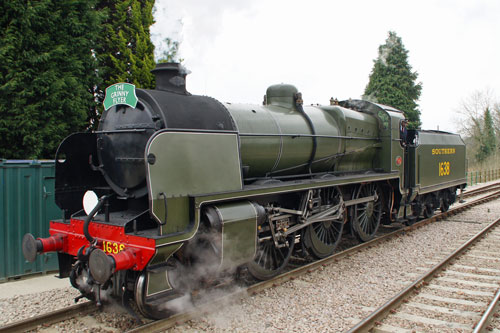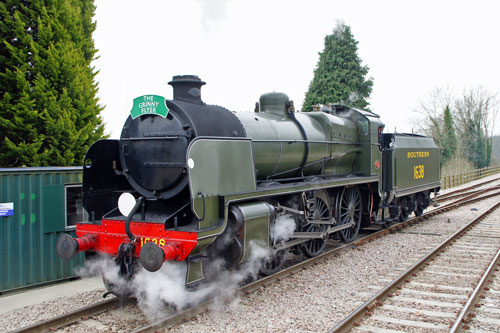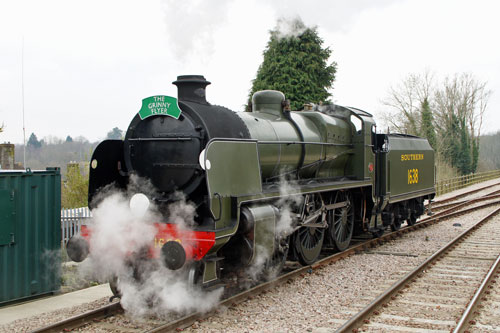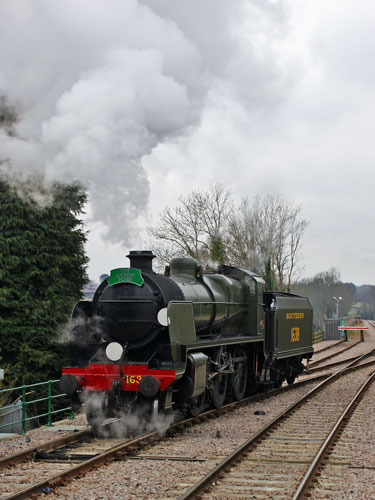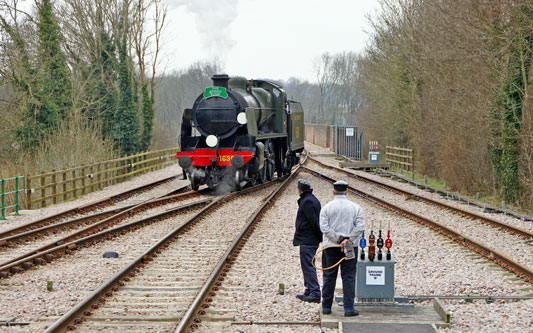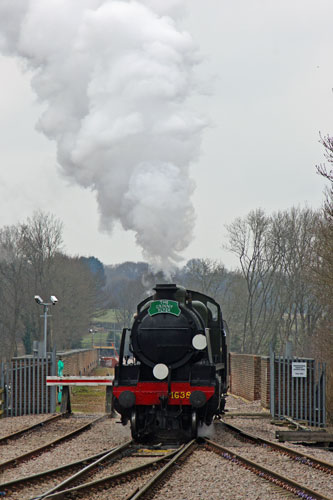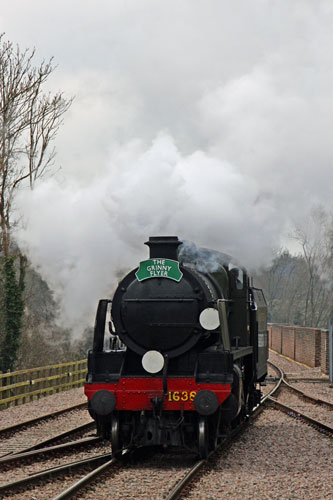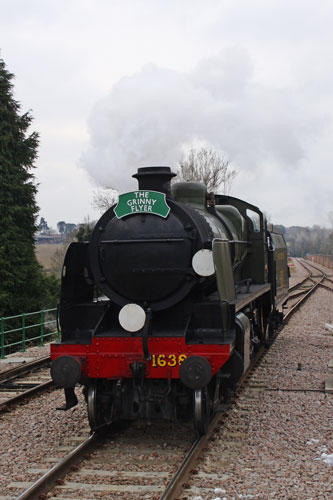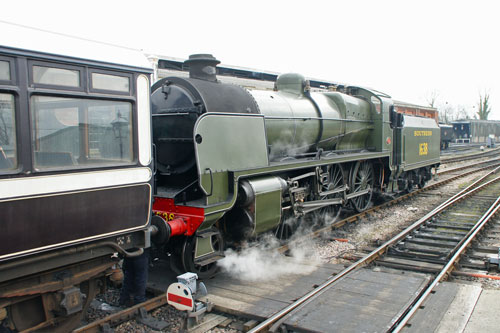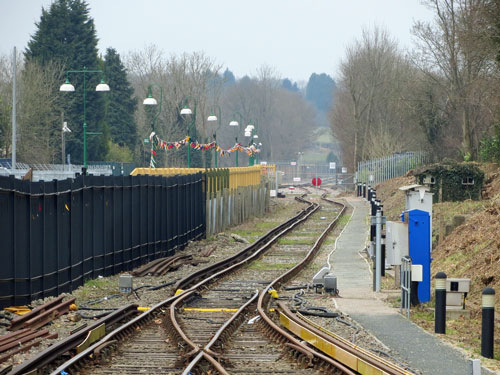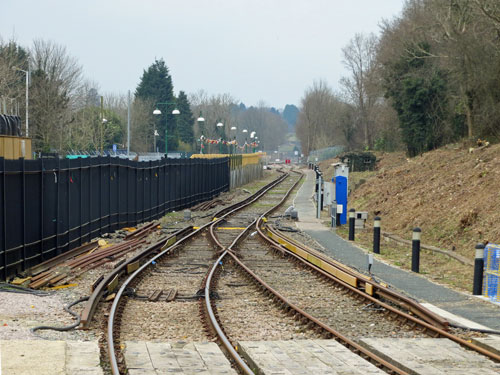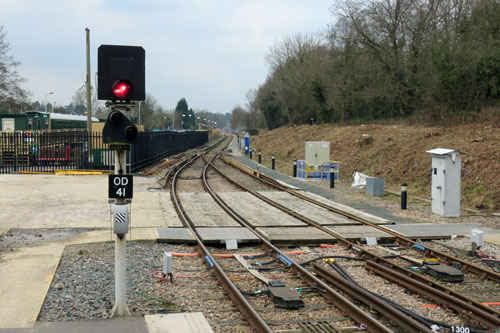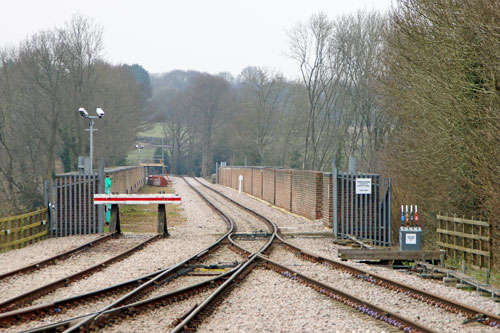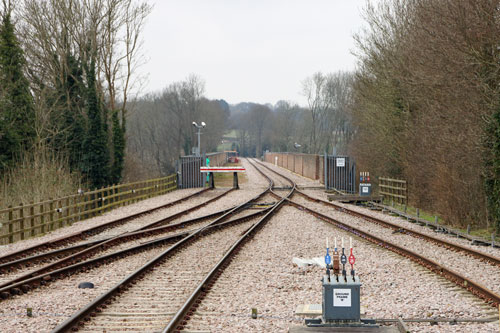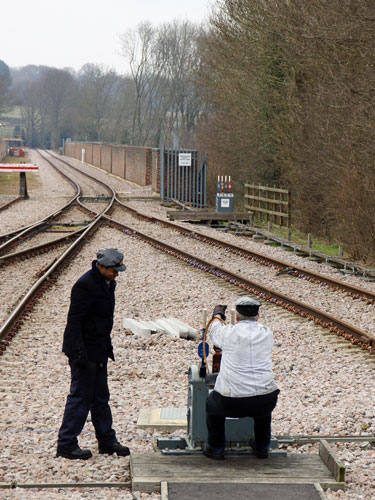|
Simplon - The Passenger Ship Website -
www.simplonpc.co.uk
Simplon facebook - Simplon Home - www.simplonpc.co.uk - Recent Updates - Search Simplon - Copyright Information - Contact Simplon This website has no connection with any shipping company, cruise line, boat operator or other commercial organisation. There are no postcards for sale on this website |
||
|
Bluebell Railway East Grinstead - Kingscote - Horsted Keynes - Sheffield Park Preserved Railway Each image links to a larger copy which opens in a new window/tab This page is under construction |
||
|
This page shows images ©Ian Boyle of the
preserved Bluebell Railway which runs from East Grinstead to Sheffield Park
in East Sussex.
In 1877 an Act of Parliament authorised construction of the Lewes and East Grinstead Railway (L&EGR). The line was sponsored by local landowners, including the Earl of Sheffield. A year later an act enabled the London, Brighton and South Coast Railway Company (LB&SCR) chaired by Samuel Laing to acquire and operate the line. The 1877 and 1878 Acts included a clause that: Four passenger trains each way daily to run on this line, with through connections at East Grinstead to London, and to stop at Sheffield Bridges, Newick, and West Hoathly. This imposed a legal requirement to provide a service, and the only way to remove this obligation was to pass another Act. The line had six stations, but only Barcombe was within walking distance of a village. Chailey parish had two stations, one at Sheffield Park and the other at Newick and Chailey. It was customary for a rural line supported by a company or individuals to have stations close to the residences of its sponsors. Thus Sheffield Park station was built for the Earl of Sheffield, and Newick and Chailey for Newick Park and Reedens, the residences of two other sponsors. The other stations were at Kingscote, West Hoathly and Horsted Keynes. A branch ran from a junction at Horsted Keynes to Ardingly and Haywards Heath on the LB&SCR main line. Designed under instructions from LB&SCR Chief Engineer Frederick Banister, the line was constructed to take double track. However only the section between East Grinstead and Horsted Keynes was laid as such; south of Horsted Keynes the line was single track with passing loops at stations. The line was opened in 1882. In 1954, long before the Beeching Axe, the branchline committee of British Railways proposed closing the line from East Grinstead to Culver Junction near Lewes. This was challenged by local residents, but closure was agreed in February 1955 for 15 June 1955, although the line closed on 29 May due to a rail strike. The acrimonious battle between British Railways and the users of the Bluebell Line lasted three years. Shortly after closure, Margery Bessemer of Chailey discovered in the 1877 and 1878 Acts a clause relating to the "Statutory Line", and demanded British Railways reinstate services. On 7 August 1956 British Railways reopened the line, with trains stopping at stations mentioned in the Acts. British Railways took the case to the House of Commons in 1957, resulting in a public inquiry. British Railways were censured, but later the Transport Commission was able to persuade Parliament to repeal the special section of the Act. By this means the line was finally closed on 17 March 1958. On 15 March 1959 a group met in Ardingly and formed the Lewes and East Grinstead Railway Preservation Society. The Society elected John Leeroy as the first chairman of the Railway, and £940 was raised through donation to start the Society. On a vote which occurred at the meeting, the Society later changed its name to the Bluebell Railway Preservation Society. The Society's initial aim was to reopen the whole line from East Grinstead to Culver Junction as a commercial service, using a two-car DMU. The plans came to nothing: the society failed to buy the whole line, and most local residents were not interested. The committee then recommended that the stretch of track between Sheffield Park and Horsted Keynes could be run as a tourist attraction, with vintage locomotives and stock operated by unpaid volunteer staff. As BR still ran an electrified line from Horsted Keynes to Ardingly, the Society leased a stretch of track from BR just south of this. In 1960 the interim line was opened, running from Sheffield Park to Bluebell Halt, 100 yards (91 m) south of Horsted Keynes. After BR ceased service in 1963, in part due to the decayed state of the small Sherriff Mill viaduct, the Society moved its northerly operations to the main station at Horsted Keynes. Subsequently the line was extended north to Kingscote (1994) and East Grinstead on 23 March 2013. Map of the Bluebell Railway |
||
